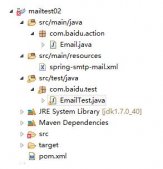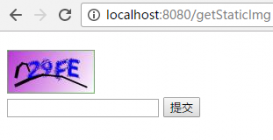前言
参数绑定,简单来说就是客户端发送请求,而请求中包含一些数据,那么这些数据怎么到达 controller ?这在实际项目开发中也是用到的最多的,那么 springmvc 的参数绑定是怎么实现的呢?
下面我们来详细的讲解。
springmvc参数绑定,简单来说就是将客户端请求的key/value数据绑定到controller方法的形参上,然后就可以在controller中使用该参数了
下面通过5个常用的注解演示下如何进行参数绑定:
1. @pathvariable注解
@pathvariable 是用来获得请求url中的动态参数的,可以将url中的变量映射到功能处理方法的参数上,其中url 中的 {xxx} 占位符可以通过@pathvariable(“xxx“) 绑定到操作方法的入参中。
示例代码:
|
1
2
3
4
5
6
7
|
@responsebody@requestmapping("/testurlpathparam/{param1}/{param2}")public void testurlpathparam(httpservletrequest request, @pathvariable string param1, @pathvariable string param2) {system.out.println("通过pathvariable获取的参数param1=" + param1);system.out.println("通过pathvariable获取的参数param2=" + param2);} |
postman发送请求截图:

输出结果:
通过pathvariable获取的参数param1=1
通过pathvariable获取的参数param2=2
2.@requestheader注解
@requestheader 注解,可以把request请求header部分的值绑定到方法的参数上。
示例代码:
|
1
2
3
4
5
|
@responsebody@requestmapping("/testheaderparam")public void testheaderparam(httpservletrequest request, @requestheader string param1) {system.out.println("通过requestheader获取的参数param1=" + param1);} |
postman发送请求截图:

输出结果:
通过requestheader获取的参数param1=abc
3.@cookievalue注解
@cookievalue 可以把request header中关于cookie的值绑定到方法的参数上。
示例代码:
|
1
2
3
4
5
6
|
@responsebody@requestmapping("/testcookieparam")public void testcookieparam(httpservletrequest request, httpservletresponse response, @cookievalue string sessionid) { system.out.println("通过cookievalue获取的参数sessionid=" + sessionid);} |
postman发送请求截图:

输出结果:
通过cookievalue获取的参数sessionid=ebef978eef6c46f8a95cc0990d2d360a
4.@requestparam注解
@requestparam注解用来处理content-type: 为 application/x-www-form-urlencoded编码的内容。提交方式为get或post。(http协议中,form的enctype属性为编码方式,常用有两种:application/x-www-form-urlencoded和multipart/form-data,默认为application/x-www-form-urlencoded);
@requestparam注解实质是将request.getparameter() 中的key-value参数map利用spring的转化机制conversionservice配置,转化成参数接收对象或字段,
get方式中querystring的值,和post方式中body data的值都会被servlet接受到并转化到request.getparameter()参数集中,所以@requestparam可以获取的到;
该注解有三个属性: value、required、defaultvalue; value用来指定要传入值的id名称,required用来指示参数是否必录,defaultvalue表示参数不传时候的默认值。
示例代码:
|
1
2
3
4
5
6
|
@responsebody@requestmapping("/testrequestparam")public void testrequestparam(httpservletrequest request, @requestparam(value = "num", required = true, defaultvalue = "0") int num) { system.out.println("通过requestparam获取的参数num=" + num);} |
postman发送请求截图:

输出结果:
通过requestparam获取的参数num=10
5.@requestbody注解
@requestbody注解用来处理httpentity(请求体)传递过来的数据,一般用来处理非content-type: application/x-www-form-urlencoded编码格式的数据;
get请求中,因为没有httpentity,所以@requestbody并不适用;
post请求中,通过httpentity传递的参数,必须要在请求头中声明数据的类型content-type,springmvc通过使用handleradapter配置的httpmessageconverters来解析httpentity中的数据,然后绑定到相应的bean上。
示例代码:
|
1
2
3
4
5
|
@responsebody@requestmapping("/testrequestbody")public void testrequestbody(httpservletrequest request, @requestbody string bodystr){ system.out.println("通过requestbody获取的参数bodystr=" + bodystr);} |
postman发送请求截图:

代码运行结果:
通过requestbody获取的参数bodystr=这是body的内容
总结
以上就是这篇文章的全部内容了,希望本文的内容对大家的学习或者工作具有一定的参考学习价值,如果有疑问大家可以留言交流,谢谢大家对服务器之家的支持。
原文链接:https://www.cnblogs.com/haha12/p/10336363.html













